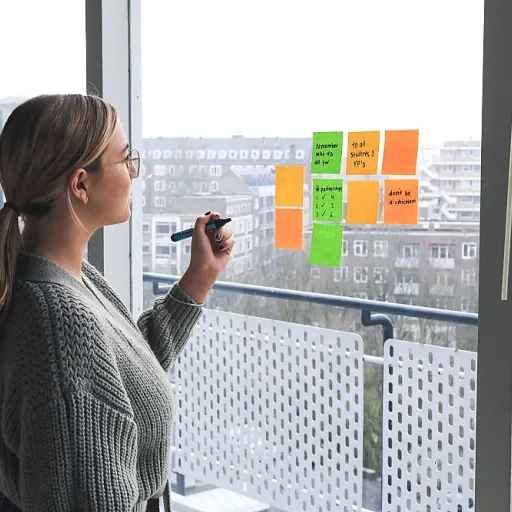
Understanding procurement opportunity assessment in the New Zealand context
What Makes Procurement Opportunity Assessment Unique in New Zealand?
Procurement in New Zealand is shaped by local market dynamics, regulatory requirements, and a strong focus on sustainability. For office managers, understanding how to identify procurement opportunities starts with a clear assessment of the current business environment and supply chain landscape. This involves analysing spend data, evaluating supplier relationships, and considering both cost savings and risk management.
Key Factors to Consider in Opportunity Analysis
- Market Potential: New Zealand's market is relatively small but highly connected. Assessing opportunities means staying aware of local supplier capabilities and emerging trends in procurement strategies.
- Supply Chain Risks: Disruptions can impact procurement operations, so risk management is crucial. Identifying strengths and weaknesses in your supply chain helps mitigate potential issues.
- Sustainability: There is increasing emphasis on sustainable procurement practices. Opportunity assessments should include evaluating suppliers' environmental and social credentials.
- Cost Analysis: Regularly reviewing spend and category management can reveal hidden saving opportunities and areas for cost saving.
Tools and Approaches for Effective Assessment
Office managers can use SWOT analysis to identify strengths, weaknesses, opportunities, and threats within their procurement function. Data-driven opportunity analysis helps pinpoint areas for improvement, while ongoing supplier management ensures long-term value. By leveraging assessment tools and staying informed about local procurement operations, you can better position your business for success.
For those managing procurement in educational settings, exploring school management platforms can further enhance efficiency and opportunity identification.
Recognizing common procurement challenges for office managers
Spotting Barriers in the Procurement Process
Office managers in New Zealand often face a unique set of procurement challenges that can impact cost savings, supplier relationships, and overall business performance. Recognising these barriers early is crucial for effective opportunity assessment and risk management. By understanding where common pitfalls occur, you can better identify procurement opportunities and strengthen your procurement function.
- Supply Chain Disruptions: New Zealand’s geographic isolation can lead to delays and increased costs. Monitoring your supply chain for potential disruptions helps in proactive risk management and maintaining continuity.
- Limited Supplier Market: The local market may offer fewer supplier options for certain categories, making supplier selection and negotiation more challenging. This can affect your ability to achieve cost savings and sustainability goals.
- Fragmented Spend: Without a consolidated view of spend data, it’s difficult to perform effective spend analysis or opportunity analysis. Fragmented procurement operations often lead to missed savings opportunities.
- Compliance and Sustainability: Balancing regulatory compliance with sustainability initiatives is increasingly important. Ensuring your procurement strategies align with both business needs and environmental goals can be a challenge.
- Supplier Relationship Management: Building long-term value requires strong supplier relationships. However, limited resources and time constraints can make it hard to invest in these partnerships, impacting your procurement opportunity assessments.
- Internal Communication: Lack of clear communication between procurement teams and other departments can result in duplicated efforts, missed opportunities, and inefficient procurement processes.
To address these challenges, consider conducting a SWOT analysis to identify strengths, weaknesses, opportunities, and threats within your procurement operations. This approach supports a more structured opportunity assessment and helps uncover potential savings and improvement areas. For further insights into managing supply chain and procurement risks in the New Zealand context, you might find this resource on enhancing inventory management particularly useful.
Evaluating your current procurement processes
Pinpointing Gaps and Opportunities in Your Procurement Operations
A thorough review of your current procurement processes is essential for identifying procurement opportunities and driving cost savings. Start by mapping out your entire supply chain, from supplier selection to payment. This helps you spot inefficiencies and potential risks that may be impacting your procurement function.- Spend analysis: Examine your recent purchasing data to identify high-spend categories and suppliers. This analysis can reveal areas where consolidating spend or renegotiating contracts could lead to significant savings.
- Opportunity assessment: Use opportunity analysis tools to evaluate where your procurement teams can add value. Look for categories with fragmented spend or inconsistent supplier performance.
- SWOT analysis: Assess the strengths and weaknesses of your procurement strategies. Consider risks such as supply chain disruptions, over-reliance on single suppliers, or lack of market intelligence.
Leveraging local suppliers and sustainable practices
Partnering with Local Suppliers for Resilience and Value
In the New Zealand market, office managers can unlock significant procurement opportunities by focusing on local suppliers. Working with nearby vendors not only supports the local economy but also helps reduce supply chain risks, especially during disruptions. Local sourcing can lead to faster delivery times, improved communication, and more agile responses to changing business needs.
- Supply chain resilience: Local suppliers often provide greater reliability, reducing the risk of delays and disruptions that can impact your procurement operations.
- Cost savings: Shorter transportation distances can lower logistics costs and carbon emissions, contributing to both your bottom line and sustainability goals.
- Opportunity assessment: Regularly review your supplier base to identify potential savings and new opportunities for collaboration. This can be done through spend analysis and supplier performance reviews.
Embedding Sustainability in Procurement Strategies
Sustainability is increasingly important in procurement processes for New Zealand offices. By integrating sustainable practices, you can create long-term value and enhance your company’s reputation. Consider the environmental impact of your purchasing decisions and look for suppliers with strong sustainability credentials.
- SWOT analysis: Use this tool to assess the strengths and weaknesses of your current procurement function, especially regarding sustainability and local sourcing.
- Category management: Identify categories where sustainable alternatives are available, such as recycled office supplies or energy-efficient equipment.
- Risk management: Sustainable procurement can help mitigate risks related to regulatory changes and market expectations.
By leveraging local suppliers and embedding sustainability into your procurement strategies, you not only identify new opportunities for cost savings but also strengthen your supply chain and support long-term business growth. These steps are essential for robust opportunity analysis and ongoing procurement opportunity assessments in the New Zealand context.
Using data and technology to improve procurement decisions
Unlocking Value with Data-Driven Procurement
Modern procurement in New Zealand offices is increasingly shaped by data and technology. Leveraging these tools can help office managers identify procurement opportunities, assess risks, and drive cost savings. Here’s how you can use data and technology to enhance your procurement function:
- Spend Analysis: Regularly analyse your procurement spend data. This helps you identify categories with high costs, spot saving opportunities, and understand where your money is going. Effective spend analysis supports opportunity assessment and enables better decision-making.
- Opportunity Analysis: Use digital tools to conduct opportunity analysis. These platforms can highlight patterns in your supply chain, flagging potential risks and areas for improvement. Opportunity assessments become more accurate when backed by real-time data.
- Supplier Performance Tracking: Technology allows you to monitor supplier performance over time. This data is crucial for risk management and strengthening supplier relationships. It also helps you spot potential chain disruptions early, ensuring business continuity.
- Market Intelligence: Digital procurement platforms can provide insights into market trends, supplier capabilities, and pricing benchmarks. This information supports SWOT analysis, helping you understand your strengths, weaknesses, and market position.
- Automation and Reporting: Automating procurement processes reduces manual errors and frees up time for strategic tasks. Automated reports give you a clear view of your procurement operations, making it easier to identify risks and savings opportunities.
By integrating data and technology into your procurement strategies, you can improve opportunity assessments, enhance risk management, and unlock long-term value for your business. This approach not only supports cost saving but also strengthens your overall procurement management and supply chain resilience.
Building relationships with suppliers for long-term value
Strengthening Supplier Partnerships for Resilience and Value
Building strong supplier relationships is essential for New Zealand office managers aiming to unlock procurement opportunities and drive long-term value. A collaborative approach with suppliers not only enhances the reliability of your supply chain but also supports cost saving initiatives and risk management efforts. By investing in these partnerships, your procurement team can identify potential savings, mitigate supply chain disruptions, and foster innovation within your procurement function.
- Open Communication: Regular, transparent dialogue with suppliers helps clarify expectations, address challenges, and align on shared goals. This openness supports opportunity assessments and allows for early identification of risks or market changes that could impact your procurement operations.
- Joint Opportunity Analysis: Collaborate with suppliers to conduct SWOT analysis and opportunity assessments. By sharing data and insights, both parties can identify strengths, weaknesses, and new opportunities for cost savings or process improvements.
- Long-Term Agreements: Establishing longer-term contracts or preferred supplier agreements can provide stability, improve pricing, and support sustainability goals. These agreements also encourage suppliers to invest in quality and innovation, benefiting your business over time.
- Supplier Performance Management: Use spend analysis and category management to monitor supplier performance. Regular reviews help ensure suppliers meet your standards for quality, delivery, and sustainability, while also identifying areas for further savings or risk reduction.
- Shared Risk Management: Work with suppliers to develop contingency plans for potential supply chain disruptions. Joint risk management strategies can reduce the impact of unforeseen events and strengthen the overall resilience of your procurement processes.
Ultimately, nurturing supplier relationships is a strategic investment in your procurement function. It enables your team to identify and capture new procurement opportunities, drive cost savings, and build a more resilient and sustainable supply chain for your New Zealand office.












